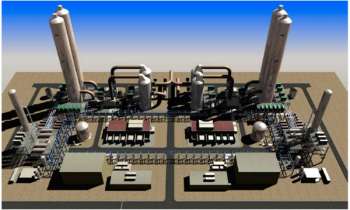
MYTH: OIL & GAS ARE DEAD
There is a famous scene in the “Monty Python and the Holy Grail” movie where a dead body collector repeatedly tries to carry off someone who continues to insist that he “is not dead yet.” After several such exchanges, the collector clubs him and carries the now-dead man off. This is analogous to the repeated proclamations about the imminent demise of the oil & gas industry. Every couple of years, since at least the early seventies, people have been predicting the death of oil & gas.
The justifications given for this view are many: fear of running out of oil (peak oil), multiple wars in the Middle East driving up energy prices, country oil embargoes, and more recently, concerns about the impact of carbon dioxide and its relation to global warming.
Yet another wave of imminent-death predictions is currently being made due to the advances in alternative energy technology and the fast build-out of wind and solar power plants. Accompanying this, we have witnessed a marked decline in orders for fossil-based power plants (primarily gas turbines combined cycles) and hand-wringing politicians accusing power industry leaders over their supposed incompetent misguidance of future energy resources.
This rhetoric stands in sharp contrast to the real numbers. They show that world oil & gas production has increased by more than 30% over the last 20 years. It is predicted to increase by at least another 15% over the next 10 years. There is near consensus in virtually all serious forecasts about the continued growth of oil, and particularly gas demand, usually at the cost of coal demand.
Growth in oil & gas production is primarily driven by the urgent energy needs of developing country populations experiencing a rapid increase in living standards. Adding to that is the dramatic industrialization of China and India over the last 30 years. The total increase of oil & gas produced over the last 20 years is three to four times higher than the world’s entire installed capacity of alternative energy plants combined.
Alternative energy sources have certainly encroached on fossil fuel power plants, but the recent decline in power plant orders has little to do with market pressure from alternative energy sources. It is a market response to cyclic overbuild of fossil fuel power plants caused by the availability of low interest rate financing over the last 15 years.
We have seen this cycle before. Historically, gas turbine orders do not follow smooth sine waves. They experience rapid upward and downward swings. Power plants are just one user of fossil fuel. Transportation (automobiles, airplanes, truck freight and shipping) require fuels with a high energy density. Besides use as a transportation fuel, oil and gas are key ingredients for another rapidly growing use: the non-combusted oil and gas feedstock for conversion to petrochemicals and lubricants. This is a use that cannot easily be replaced by renewables.
For the distribution of energy, electricity and batteries provide a limited alternative. But the massive electric infrastructure required to distribute and store energy is not currently available. This is also a far less efficient way to bring energy to consumers and power plants when compared to simple hydrocarbon pipeline transport and distribution.
Further, technical and commercially viable solutions to handle the intermittent supply nature of renewable energy-sourced power have yet to be developed. That said, there is always the risk that a politician may try to club the oil & gas industry over the head to hasten its demise.
For the foreseeable future, though, combined cycle power plants will continue to be built at GW rates easily exceeding those of alternative energy plants. Should we expect to see changes in the market? Yes. There is and will continue to be an ongoing adaption to renewables. But the sheer amount of energy the world requires is daunting.
Bottom line: Oil and gas are not dead, and neither are gas turbine power plants.
Newsletter
Power your knowledge with the latest in turbine technology, engineering advances, and energy solutions—subscribe to Turbomachinery International today.





